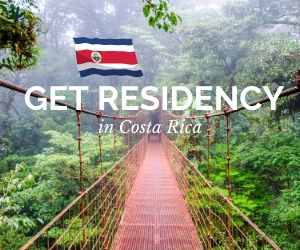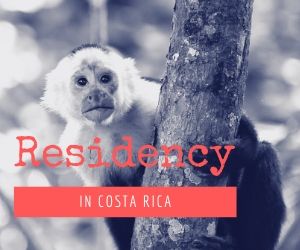|
Seems like Rico has decided it is easier to surf the net and plagiarize what he finds there rather than go out and get the news. This is the complete article, with the requisite attribution to the author, that Rico printed certain sections of in his Inside Costa Rica article.
Three Days In The Costa Rican Rainy Season ---
By Andrea Gourgy --- IGN Entertainment
VITAL INFORMATION ---
Population 4,200,000
Languages spoken Spanish
Currency Costa Rican Colon (CRC); 1 USD = 508 CRC
Average temperature 57°F -75°F in December; 63°F -81°F
in May (San José)
High season December to April (dry season)
Although Costa Ricans speak Spanish along with their
Central-American counterparts, they have their own
unique language when it comes to describing the
country's frequent rain. Pelo de gato -- literally
meaning cat's fur -- refers to a misty rain, an aguacero
indicates a fierce downpour, and a temporal describes a
continuous, light rain caused by a passing storm.
The rainy season is in full swing in Central America,
and for Costa Rica, that translates into six straight
months of precipitation every year from May through
October. So it's not surprising that Costa Ricans have
developed countless words and expressions to convey all
the subtleties of rain.
But even in the rainy season, there is still plenty to
see and do in Costa Rica. In fact, the rainy season
brings with it certain advantages that the dry season
doesn't have, like cheaper prices, shorter queues and
some very unique attractions. So if you're planning a
trip to Costa Rica over the next few months, here is a
taste of what the rich coast has to offer in the
upcoming rainy season.
Day 1: In the capital --- San José is not like any North
American city you know. Ancient buses spout thick
exhaust fumes and the bustling downtown is lined with
numerous armerias (weapons stores) -- all of this, of
course, simply adds to the city's charm.
But even though San José is the hub of the country, the
city itself is still set up like a small town. One main
street, aptly called Avenida Central (Central Avenue),
runs through the entire city from west to east, making
getting around fairly straightforward. You can walk
through most of downtown by foot, but do be prepared to
get wet. When it rains here, the streets become
virtually flooded, and you might find yourself walking
through large pools of water.
Start your day at the busy Mercado Central (Central
Market), located downtown on the Avenida Central between
streets 6 and 8. Grab a typical Costa Rican breakfast of
gallo pinto (rice and beans), or browse through the
market's variety of fruit, spices, clothing, bags, local
works of art, and souvenirs.
Next, hop back on the Avenida Central and head east
toward the Plaza de la Cultura. This plaza is home to
the city's architectural pride and joy, El Teatro
Nacional (The National Theater), built in the late 1800s
after an Italian opera singer refused to perform in
Costa Rica due to its lack of a proper theater. Also in
the plaza is the Museo del Oro (Gold Museum), which
houses gold dating back as far as pre-Columbian times.
After you visit the museum, stop for some coffee and
people watching at the Café Parisienne, part of the very
posh Hotel Gran Costa Rica overlooking the square.
Lastly, continue east on the Avenida through the Plaza
de la Democracia (Democracy Square) to the Museo
Nacional (National Museum), which exhibits artifacts
depicting the country's history, religion and art.
Now you're done with the essential sightseeing and are
ready to unwind. Continue even further east on the
Avenida to the suburb of San Pedro (you might want to
hop on a bus or in a cab, as you'll have to pass through
the areas of Los Yoses and La CalifornÃa first). End
your afternoon with a drink in one of the many bars and
cafes in the dynamic area around the University of Costa
Rica.
Nightlife in the capital can get pretty steamy and tends
to go into the early hours of the morning. Costa Ricans
love to dance salsa, merengue, reggaeton, and a dance of
their own creation called the Creole Swing (a version of
American swing dancing set to Latin music).
If you're looking to strut your stuff alongside the
locals, try heading out to the Centro Comercial El
Pueblo, slightly north of the city center. El Pueblo is
an open-air mall with alleyways full of restaurants,
cafes and bars (do take care of yourself and your wallet
in this area; crime is common here, especially at night)
or head to nearby El Tobogán for the live band on
Fridays and Saturdays.
Day 2: Tortuguero National Park --- Costa Rica is home
to Tortuguero National Park, located on the Caribbean
coast; it is the only remaining nesting ground of the
green sea turtle in the Western Hemisphere. For more
adventurous travelers (or those of you with more time on
your hands), there is a long route by bus and boat --
but for a shorter visit, you can take an organized tour
out of San José. One-day tours are available from
Expediciones Tropicales, while two- and three-day tours
are available from Ecole Travel.
On the way to the Caribbean coast, you'll drive through
the Costa Rican province of Limon, a magnificent
tropical rainforest where parts of the movie Jurassic
Park were filmed. In the forested area in Tortuguero,
you can spot howler monkeys, sloths, jaguars, and even
the famous Jesus Christ Lizard. Officially called the
male Basiliscus basiliscus, it is known as the Jesus
Christ Lizard because the shape of its feet allows it to
walk on water.
The national park was founded in 1978 to protect this
endangered species from being killed for its shells.
These turtles swim as far as Asia, but return every five
to seven years to nest; they can be spotted on the beach
between July and September.
If you have the extra time to spend, night is the best
time to get a look at these beauties when they come out
to nest their eggs. You may even be able to spot the
newly hatched turtles running back to sea. What's so
special about these turtles? They are massive; they can
measure up to a meter in length.
Day 3: Whitewater rafting --- There is more to the rainy
season than turtles; the rain also means that the water
level in the country's rivers is higher. For the
adventure traveler, this is the prime season for
whitewater rafting. On day three, take a trip to the
famous Pacuare River on the country's Atlantic slope for
an adrenaline-filled ride.
Rios Tropicales offers one-day trips out of San José to
the Pacuare River. The Pacuare is rated a class III-IV,
but don't worry if you have no prior rafting experience
-- the tour will not only pick you up from your hotel,
but will also provide you with equipment and training
before hitting the course filled with whirlpools, rapids
and gorges. Take a minute off from paddling to peak at
the toucans and spider monkeys that'll be hanging around
in your midst.
After your tour drops you back off in the capital, spend
your last night grooving to a local jazz band at The
Jazz Café in San Pedro. Offering some of the best in
live music, The Jazz Café is one of the more fashionable
bars in the city. And while you're out, don't forget to
sample Costa Rica's national liquor, called guaro. It is
made from sugar cane and can be ordered in the form of a
shot or as a guaro sour -- a mix of guaro and coke or
sprite.
If you think you can survive an aguacero or two, then
get packing. You'll be able to take advantage of some of
the best the rich coast has to offer, without the high
prices and tourist traffic that come with traveling at
peak season. Just one crucial word of advice if you're
heading south in the upcoming months: Don't forget to
pack your rain gear.
tips for the tripThere are no numbered addresses in
Costa Rica. In the capital, addresses are given in
relation to cross streets, and everywhere else,
addresses are given in relation to a recognized
monument. For example, instead of a numeric address,
you can find a home 200 meters south and 100 meters west
of church X. If you get confused, just ask a taxi driver
or a local to direct you.
For the most up-to-date news and events in Costa Rica,
visit a local newsstand for your copy of The Tico Times,
the country's most reputable weekly English-language
newspaper.
If you're single and on the prowl, make a mental note of
the following: Costa Ricans usually wear their wedding
rings on the right hand.
_________________  Pura Vida  Only Irish coffee provides in a single glass all four essential food groups: alcohol, caffeine, sugar and fat. Alex Levine 
|










